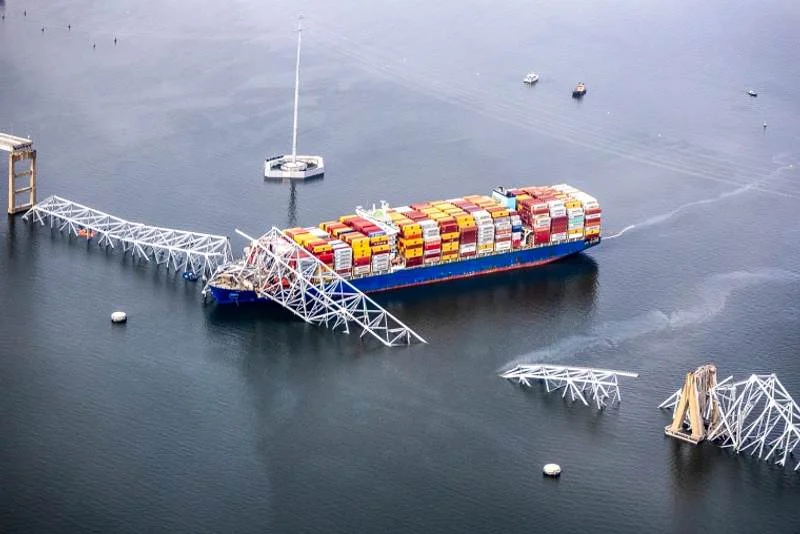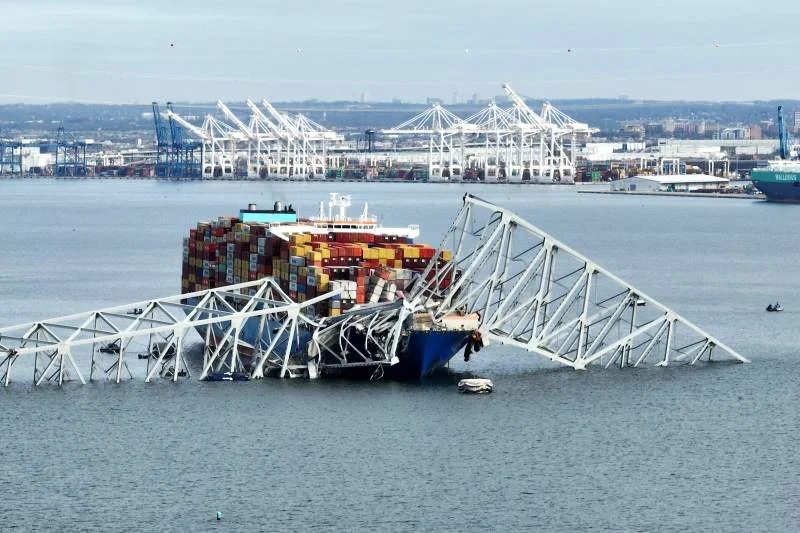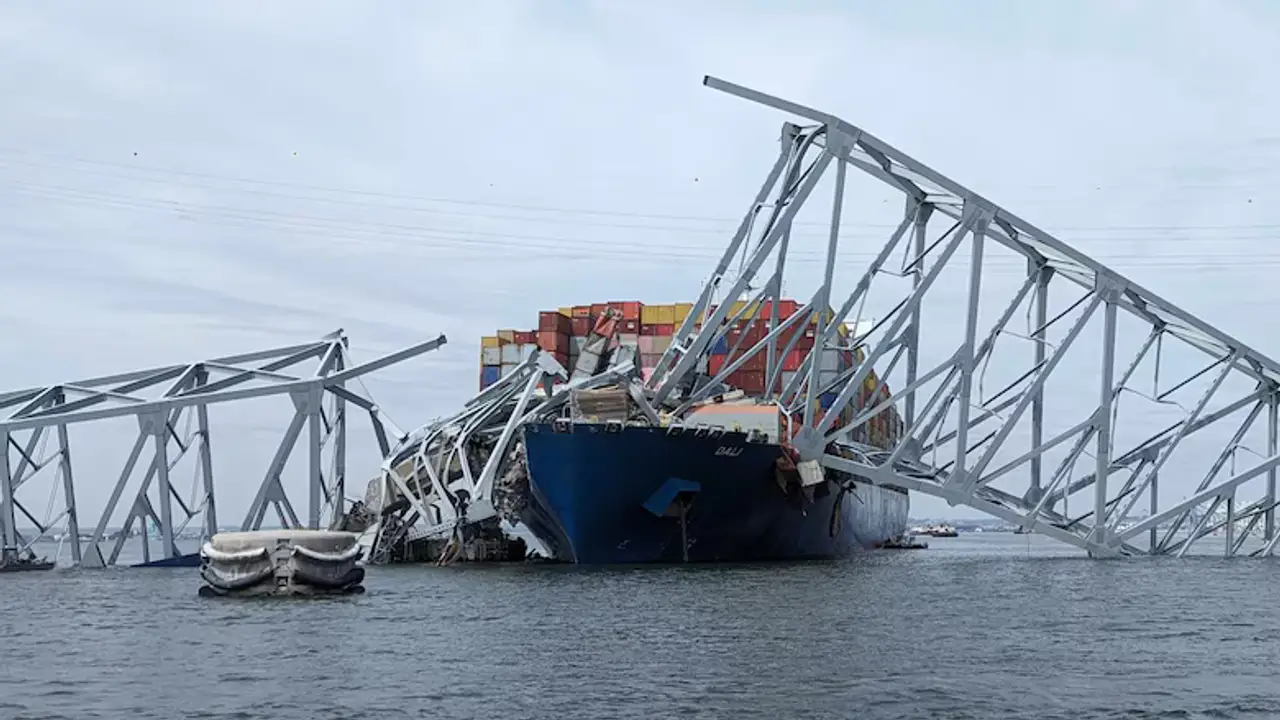Francis Scott Key Bridge Collapse in Baltimore
The recent collapse of the Francis Scott Key Bridge in Baltimore has sent shockwaves throughout the region. This tragic incident on March 26, 2024, raises critical questions about infrastructure safety and the response of local authorities. As the investigation unfolds, we delve into the details surrounding the collapse and its implications for Baltimore and the surrounding communities.
Baltimore Bridge Collapse Overview
The Baltimore bridge collapse has garnered significant attention due to its impact on transportation and local communities. The Francis Scott Key Bridge, a vital artery for both commuters and cargo transport, suffered a catastrophic failure when the bridge collapsed, leading to wreckage that obstructed the Patapsco River. This incident not only disrupted traffic on I-695 but also raised concerns regarding the safety of other structures in the area.
What Happened During the Collapse?
During the collapse of the Francis Scott Key Bridge, the cargo ship Dali was navigating the Patapsco River, leading to speculation about its involvement in the incident. Eyewitness accounts describe a sudden and alarming shift in the bridge’s structural integrity, causing significant portions of the roadway to give way. The National Transportation Safety Board and the Coast Guard are actively investigating the events that led to this disaster, aiming to uncover the factors that contributed to the key bridge incident.
Timeline of Events Leading to the Incident
Scott Key Bridge collapse response began after a cargo ship that caused the incident left the port of Baltimore. The ship lost power and hit the bridge in March 2024, leading to the collapse of Baltimore’s Francis Scott Key Bridge.
The City of Baltimore and Army Corps of Engineers quickly initiated wreckage removal for Key Bridge. Construction workers and emergency responders worked tirelessly at the site of Key Bridge, while authorities focused on supporting affected small businesses.
As part of the Key Bridge response 2024, efforts were made to recover victims and clear the Baltimore port. The Francis Scott Key Bridge response included plans for rebuilding Maryland’s Francis Scott Key Bridge and restoring normalcy to the area.
Impact on Transportation and Local Communities
The impact of the Baltimore key bridge collapse extends far beyond the immediate wreckage. The closure of this vital crossing has disrupted transportation routes, affecting the Port of Baltimore and the flow of goods, especially for the container ship Dali, which was impacted by the incident. Local communities are feeling the strain as traffic is redirected toward the Baltimore Harbor Tunnel, leading to increased congestion and delays. Governor Wes Moore has emphasized the need for swift recovery efforts and a thorough investigation to ensure the safety of Baltimore’s infrastructure moving forward.
Information on the Ship that Struck the Baltimore Bridge

The cargo ship Dali was navigating the Patapsco River when the Francis Scott Key Bridge collapse occurred on March 26, 2024. This container ship, known for transporting goods to the Port of Baltimore, was reportedly carrying a significant cargo load during the incident. As investigations unfold, the National Transportation Safety Board and the Coast Guard are focusing on the ship’s operational data and its impact on the key bridge incident.
Investigation into the Cargo Ship’s Operations
The Maryland Department is overseeing the bridge wreckage removal for Key Bridge. The criminal investigation into the ship that struck Baltimore Bridge continues, with one victim recovered in the collapse.
AP News reports that the Port of Baltimore workers affected by the incident may be eligible for unemployment insurance.Baltimore Mayor Brandon Scott has urged residents to use alternate routes, as both the outer loop and inner loop near Exit 1 are closed.
The collapsed Francis Scott Key Bridge has significantly impacted traffic flow in the area.The owner and manager of the ship in Baltimore are cooperating with authorities. Maryland Tough, Baltimore Strong has become a rallying cry for those affected by the collapse and their families. The investigation aims to determine how the vessel struck the Francis Scott Key Bridge.
Response from the Shipping Company
The shipping company responsible for the cargo ship Dali has publicly expressed its concern regarding the bridge collapse and the subsequent wreckage. In a statement, they emphasized their cooperation with the National Transportation Safety Board and Coast Guard in the ongoing investigation. The company has also committed to providing all necessary information to assist in the recovery efforts and to ensure that safety protocols are reviewed and enhanced to prevent future incidents.
Emergency Response Measures Taken
In the wake of the Francis Scott Key Bridge collapse, a comprehensive emergency response was swiftly initiated. Local authorities, including the Baltimore City Fire Department, mobilized teams to assess the wreckage and provide assistance to any potential victims. Rescue operations were coordinated with various agencies, ensuring that the site was secured and that the Patapsco River was monitored for any hazardous materials from the cargo ship Dali.
Government and Local Agency Involvement
The key bridge collapse in Baltimore prompted an immediate response from both government officials and local agencies. Governor Wes Moore declared a state of emergency, facilitating rapid deployment of resources to aid in the wreckage removal for the key bridge. Collaboration among state and local agencies has been vital in addressing the aftermath of the incident, ensuring that the safety and infrastructure concerns of Baltimore County and the surrounding areas are prioritized.
Public Safety and Recovery Efforts

Public safety has become a central focus following the Baltimore key bridge collapse. Authorities are working diligently to implement recovery efforts, including the assessment of alternative routes for traffic, particularly for vehicles redirected toward the Baltimore Harbor Tunnel. The community is urged to stay informed through updates from NBC News and local officials as the recovery process unfolds, with the aim of restoring normalcy and addressing the concerns of Baltimore residents effectively.
Preliminary Report Findings
Preliminary Report Findings on the Scott Key Bridge collapse indicate that the cargo ship lost power before it struck the structure. NTSB Chair Jennifer Homendy stated that the ship hit the bridge, causing its catastrophic failure.
The wreckage of the bridge has impeded the shipping channel.Baltimore Mayor Brandon Scott announced that six construction workers who were filling potholes on the bridge at the time of the incident are presumed dead.
The Maryland Department of Transportation is working on plans for removal for key bridge response and potential controlled demolition.The Maryland Department of Labor has stated that workers affected by the bridge collapse may be eligible for unemployment insurance. Mayor Scott emphasized the importance of supporting those impacted by this tragedy in Baltimore on Monday.
Factors Contributing to the Collapse
Several factors have been identified that may have contributed to the Baltimore bridge collapse. Preliminary assessments suggest that potential design flaws, combined with the dynamic forces exerted by the cargo ship Dali, could have played a crucial role. Additionally, environmental conditions such as strong currents in the Patapsco River at the time of the incident are being examined, highlighting the complex interplay of elements that led to the tragic key bridge incident.
Recommendations for Future Safety Measures
In light of the findings from the preliminary report, various recommendations for future safety measures have emerged. Experts advocate for comprehensive structural evaluations of aging bridges, including the Francis Scott Key Bridge, to prevent similar incidents. Enhanced monitoring systems utilizing technology to detect early signs of wear and tear are also suggested, alongside increased collaboration between local, state, and federal agencies to ensure rigorous safety protocols are established and maintained throughout Baltimore’s infrastructure.
Local Responses to the Bridge Collapse
The local response to the Baltimore key bridge collapse has been one of shock and grief. Community members have expressed their concerns regarding the implications for both transportation and local livelihoods reliant on the Port of Baltimore. Public forums have emerged as platforms for residents to voice their worries, emphasizing the need for accountability in the wake of the collapse of the Francis Scott Key Bridge and for a commitment to enhanced infrastructure safety moving forward.
Support Initiatives for Affected Residents
In response to the Baltimore bridge collapse, various support initiatives have been launched to assist affected residents and businesses. Local organizations are providing resources for those directly impacted by the wreckage, including financial aid and counseling services. Community leaders, alongside Governor Wes Moore, are actively working to ensure that those who rely on the I-695 and surrounding routes receive the necessary support during this challenging time as recovery efforts continue.
Public Forums and Discussions on Future Infrastructure
Public forums have become essential venues for discussions surrounding future infrastructure in Baltimore following the key bridge collapse. These gatherings allow residents, experts, and officials to engage in meaningful dialogue about safety measures and potential improvements to the transportation system. The community is keen on advocating for transparent investigations into the key bridge incident while emphasizing the importance of long-term solutions to prevent further tragedies within Baltimore’s infrastructure.




Post Comment